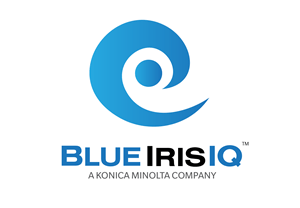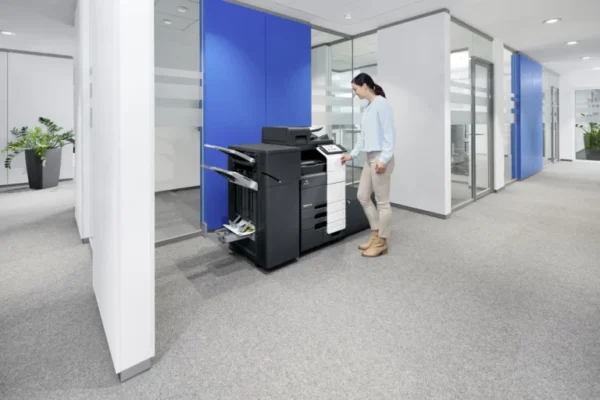The pandemic has altered the hiring dynamic while providing the industry with a deeper pool of candidates.
As we close out the first year of the pandemic that is expected to continue well into 2021, companies who had a “wait and see” approach bolstered by cautious optimism are now finding new ways to function as close to normal as possible.
And for many, getting back to normal means hiring. As the pandemic set in, some companies had to furlough or lay-off workers. The turmoil of pandemic living caused many to lose staff who moved to new locales, opted for alternative careers, or took time off to care for their family. Change can mean growth, and for those companies in a position to hire, the pandemic has redefined what it means to work and created new ways to connect with candidates
“It’s hard to believe that all this has happened in less than a year,” said Paul Schwartz, president of Copier Careers, an industry-focused recruiting firm. “The industry was already accelerating and changing and evolving, but this put a rocket engine on it,” said Schwartz.
Schwartz and Copier Careers’ Senior Vice President Jessica Crowley have a wide-angle view on the hiring market with their compendium of over 100,000 copier professionals nationwide. From that vantage point, they see an industry that is starting to thaw.
“At the start of the pandemic, the majority of companies were in a holding pattern, just waiting to see where things evolve,” said Crowley. “Since then, in the summer timeframe, early fall, clients started reaching out saying they were looking for candidates. It’s grown significantly since then.”
While the pandemic’s temporary shift to remote work has inspired some workers to move, either to be closer to family or to find a less densely populated area, that model may not be permanent.
“The great assumption is it’s going to go back to somewhat normal and be based out of an office,” observed Schwartz. “I haven’t heard of anyone who doesn’t ultimately plan to turn back to that model.”
Screen Time
One of the most common ways companies have adapted in a social distancing world are video interviews. This has had surprising advantages for the dealer clients of GreatAmerica Financial Services Corp. and job candidates. Sally Brause, director, human resources consulting, noted that video interviews can have a surprisingly different tone than in-office meetings with candidates.
“Interviewees feel more relaxed and comfortable in a video interview,” said Brause. “They kind of let their guard down a little bit more, and you actually get to see the truer colors of a candidate than you might when they have to be in an office in someone else’s environment that feels more stressful and stuffy.”
Brause foresees a hybrid approach to hiring, combining the advantages of pandemic-style technology connections with good old-fashioned facetime.
“I don’t ever want to see this replace the in-person interview with a video interview, but I do think for a [first] step it can be helpful,” she said. “The reason I still like the in-person interview is candidates can experience the company culture much better when they’re physically present.”
Going Remote
Natalie Cumberbatch, vice president of human resources, Kyocera Document Solutions America, has seen enough success with her company’s move to remote work that she expects it to stick around long-term.
“We recognized early on that this was something that we were going to put into place on a more permanent basis anyway,” she said.
And remote work also means remote hiring.
“Part of the process had already been that we were doing some type of Zoom meeting previously. Now everything’s happening remotely,” she said. In those instances when we’re able to meet people for a final interview, then we will go into the office. Rather than going in for every single round, maybe just the final round. We probably will continue with that because even with the vaccine, people still need to feel comfortable.”
A Time to Re-Evaluate
Konica Minolta Business Solutions U.S.A. has already made extensive opportunities available for remote work, so in some ways, the pandemic has been business as usual. Still, both Vicky Ringwood, senior vice president of human resources and Mohan Chitoor, director, talent acquisition, saw this unprecedented time as an opportunity to re-evaluate their hiring and onboarding process and realign with the company’s core values.
“Our sales team and service members have always had the ability to work remotely,” said Ringwood, “so when we went into COVID and had to respond, it was more our support and staff workers that we needed to work differently. Because of the technology that we have, it was pretty smooth, all things considered. We found out about it on Sunday, and on Wednesday we were deploying workers to work from home.”
While strategies for existing workers focused on clarity of safety protocols and supporting those experiencing pandemic-related upheavals, it soon became clear that recruiting was an opportunity to show support, even for people who hadn’t yet joined the Konica Minolta team.
“What we notice about candidates coming in now, they have a different need, or they’re asking for something that’s a little different,” said Chitoor. “We’ve seen a lot of concern with job stability because many have been laid off. Of course, they’re looking for flexible work options.”
Salary and the potential for growth within the organization are also important to these candidates. Still, more importantly, Chitoor said they’re also trying to understand how the company can support them during this tough period.
“We’ve gotten questions directly asking us ‘Hey, we’re going through these situations at home, will my manager be understanding? Is Konica Minolta going to support me and understand what I’m going through? And our managers have been prepared to step forward. They’ve been proactive when they talk to candidates to let them know they’re willing to make those accommodations.”
Talented Pool
Though conventional wisdom might predict workers in chaotic times make conservative moves, the shakeups in many industries have brought talent with job experience outside what recruiters might traditionally look for to Konica Minolta’s door. These candidates see the upheaval or current climate as a chance to pursue deferred career dreams.
“We’ve seen candidates who’ve gone through sales and marketing programs, but were working maybe in the hospitality industry, or in something that’s not directly related,” said Chitoor. “They’re now applying for these sales positions. Even though they don’t have directly related skills, they’re doing this because they had an interest before, but life circumstances might have dictated otherwise.”
Many candidates Chitoor and Ringwood interview were laid-off because their previous employer made cutbacks to survive the pandemic and are anxious about how that could disadvantage them in the recruitment process.
“It takes a lot of empathy from a company perspective to understand the reality of what’s going on right now,” said Chitoor. “Not having a job should not be something that’s held against them.”
Incentives and Inclusivity
Konica Minolta realized that even during a pandemic crunch, there were ways to move resources around to maximize support for workers. “We just enhanced our 401K, and we did that by taking away from another underutilized program,” revealed Ringwood. “It communicates to our employees that we want to invest in their future, and for our candidates that we are a very competitive place to work.”
The company even reevaluated the language of their job postings to make them more inclusive.
“Different people think they’re suited for a job when they have different levels of skills,” said Chitoor. “This is an industry research fact. Males will apply for a job when they’re forty or fifty percent comfortable, females or diverse candidates may need to be seventy-five to ninety percent comfortable to feel they’re a good fit. So, we started working on our job descriptions to make them less specific, more open, less aggressive-sounding.”
“There’s been nothing but a real a desire to make it the best possible candidate and hiring manager experience that we can, and that’s by delivering high-touch service through thoughtful communication and information,” added Ringwood. “It’s been a low-cost way to have a high impact.”
Making changes and honestly assessing the results of those changes has been crucial for Kyocera as well.
“One thing [to think about] as you make this change, is how has that impacted productivity,” suggested Cumberbatch. “Things are still getting done, people are still being productive, still communicating. It’s become our expectation that this is how we’re going to operate.”
Access Related Content
Visit the www.thecannatareport.com. To become a subscriber, visit www.thecannatareport.com/register or contact cjcannata@cannatareport.com directly. Bulk subscription rates are also available.



